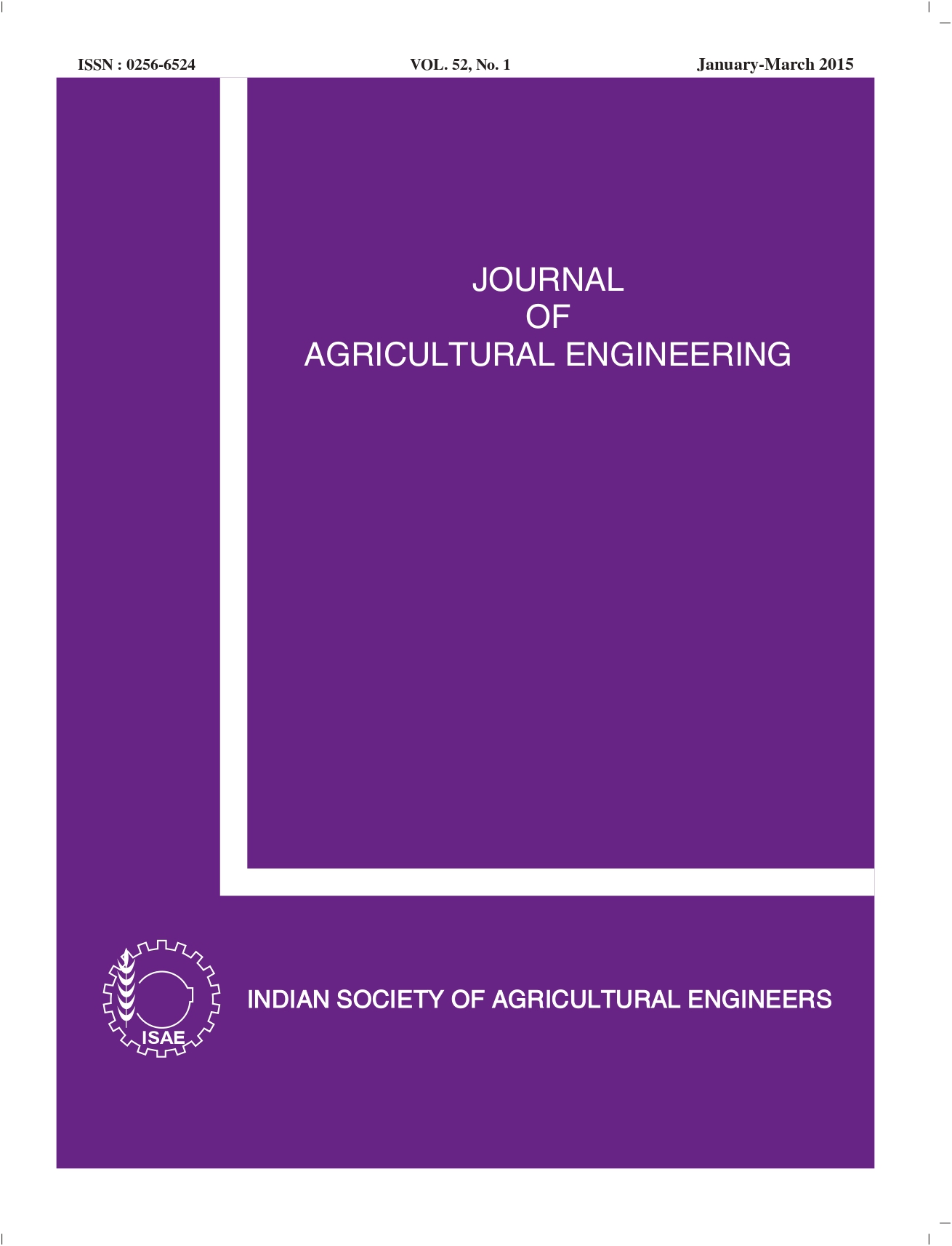Effect of Drying Methods and Storage on Quality of Ready-to-eat Dehydrated Carrot Shreds
DOI:
https://doi.org/10.52151/jae2015521.1568Keywords:
Carrot, Carotenoids, β–carotene, storage temperature, colour, texture, sensory qualityAbstract
The investigation was carried out to evaluate the effect of drying methods and storage conditions on the quality of ready-to-eat dehydrated carrot shreds made from tropical orange coloured mature carrots. The prepared carrot shreds were blanched in boiling water for pre-standardized time, and dipped in sugar solution for 30 min. The shreds were drained, and dehydrated in a cabinet dryer a low-temperature dryer at temperature of 58±2oC and 40±2oC, respectively, up to final moisture content of 3-5 per cent. It took 9 and 12 h, respectively, for drying in cabinet dryer and low temperature dryer. Results indicated that cabinet dryer was better for dehydration of carrot shreds as compared to low temperature dryer, as it retained higher amount of β-carotene, total carotenoids, rehydration ratio, and low non-enzymatic browning in the finished product, and also took less time for bulk drying of the product. Dehydrated carrot shreds were packed in 200g HDPE pouches and stored at room temperature and low temperature for storage study. It was found that carrot shreds could be stored at room temperature up to 3 months without loss of colour, flavour and texture; and up to 6 months at low temperature (7oC). However, the quality of the product was significantly affected by storage temperature and period of storage.
References
AOAC. 2005. Official Methods of Analysis, 18th Ed., Association of Official Analytical Chemists, Gaithersburg.
Dev R; Subanna V C; Ahlawat O P; Gupta Huddar A G. 2006. Effect of pre treatment in the quality characteristics of dehydrated onion rings during storage. J. Food Sci. Technol., 43(6), 571-574.
Jayaraman K S; Dasgupta D K; Babu Rao N. 1991. Quality characteristics of some vegetables dried by direct and indirect sun drying. Ind. Food Packer, 45, 16-23.
Kadam D M; Samuel D V K; Prasad R. 2006. Optimization of pre- treatments of solar dehydrated cauliflower. J. Food Eng., 77, 659-664.
Nadanasabapthi S; Srivatsa A N; Natraju S. 1993. Storage study of mango bar in flexible packaging materials. Ind. Food Packer, 5, 8-12.
Negi P S; Roy S K. 2001. Effect of drying conditions on quality of green leaves during long term storage. Food Res. Int., 34, 283-287.
Palozza P; Krinsky N I. 1992. Antioxidant effects of carotenoids in vivo and in vitro: An overview. Mds. Enzymol., 213, 403-420.
Pande V K; Sonune A V; Philip S K. 2000. Solar drying of coriander and methi leaves. J. Food Sci. Technol., 37, 592-595.
Panse V G; Sukhatme P V. 1989. Statistical methods for agricultural workers. Publication and Information Division, ICAR, New Delhi.
Ranganna S. 2002. Handbook of Analysis and Quality Control for Fruit and Vegetable Products. 2nd Ed., Tata McGraw Hill Pub. Co. Ltd., New Delhi, India.
Sagar V R; Khurdiya D S; Balakrishnan K A. 1998. Effect of storage temperature and period on quality of dehydrated ripe mango slices. J. Food Sci. Technol., 35 (2), 17-150.
Suvarnkuta P; Devahastin S; Majumdar A S. 2005. Drying kinetics and b- carotene degradation in carrot undergoing different drying process. J. Food Sci., 70, 520-526.
Szezeniak A S. 1983. Physical Properties of Foods: What They are Their Relation to Other Food Properties. In: Physical Properties of Foods, (Eds. Pelly M, Bagley EB), The AVI Publishing Co. Inc, Westport.














